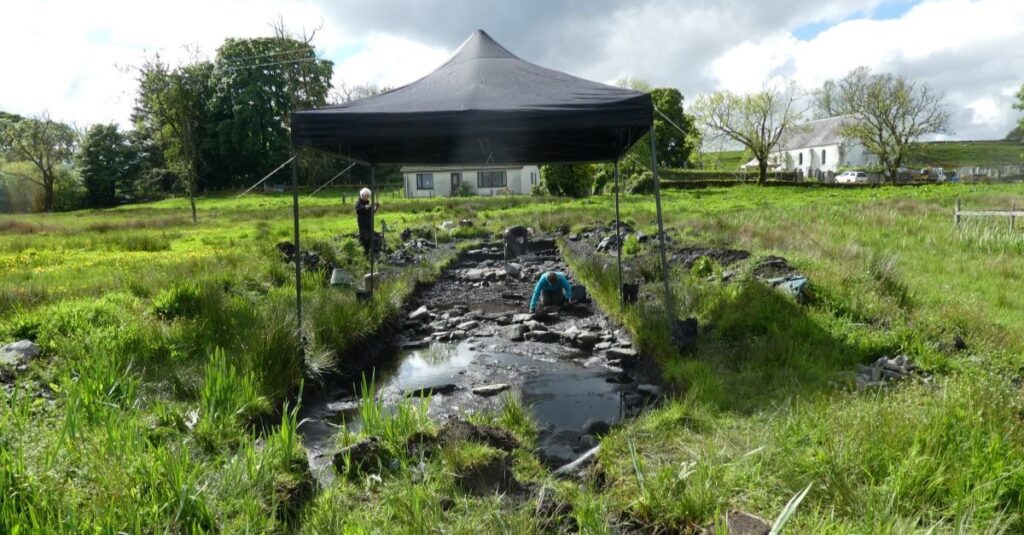
Archaeologists discover lost monastery of St Moluag on Isle of Lismore
It has long been believed that St Moluag was one of the earliest saints to arrive in Scotland after he made it to the Isle of Lismore from Ireland around 560AD on a mission to bring Christianity to the Picts.
But his monastery on the island near Oban has never been located, and until recently the only firm evidence of his presence was the record of his death in 592 in the Annals of Ulster.
It was assumed the monastery was near the medieval Cathedral of Argyll on Lismore, which was dedicated to St Moluag in the 13th century, although no visible signs survived.
For six years, a team of community archaeologist from the Lismore Historical Society have been searching for answers on the island, which now has a population of around 150.
After unsuccessful investigations around the island, the volunteer team turned their attention to a very unpromising wet field below the parish church.
The uncovering of an 8th century burial in 2019 proved they were heading in the right direction, but the Covid pandemic intervened and field work was stopped until 2022.

The entrance to the monastic oval building.
Now, the group believes they have found the site of St Moluag’s lost monastery, with evidence of religion, jewellery making and crafts there more than 1,000 years ago.
An oval stone building which was discovered has now been dated to between the 7th and 10th century, the era of the early monastery, confirming the society’s suspicions.
A workshop where precious metals were used has also been uncovered, as well as evidence of other workers creating fine carvings in stone, wood, bone and antler, nearby.
Dr Robert Hay from the society said the finds confirm Lismore is now as important as places like Iona.

An almost intact crucible was discovered by the group.
‘These activities confirm that the site ranks in importance with other prominent ecclesiastical and monastic early medieval establishments in Scotland such as Iona, Portmahomack, and Inchmartin,’ Dr Hay said.
‘The metal working evidence also showing parallels with secular power centres such as at Dunadd, a royal centre of Dàl Riatan Argyll.’
‘It is now known that an area next to the oval building was the focus of high-status and highly skilled metal working, with the fragments of around 120 crucibles found.
‘Analysis by the National Museum of Scotland revealed that they were used for melting copper-alloys, silver and gold.
‘Broken ceramic moulds for making penannular brooches were also recovered. Meanwhile, a search for artefacts from Lismore in the national collection uncovered a rare ‘touchstone’ used to assay the purity of samples of gold.
‘This fine craft activity, based on long-distance trade, generating prestigious objects for the church and wealthy patrons, is evidence of a sophisticated and influential monastic centre.’
TAGS

